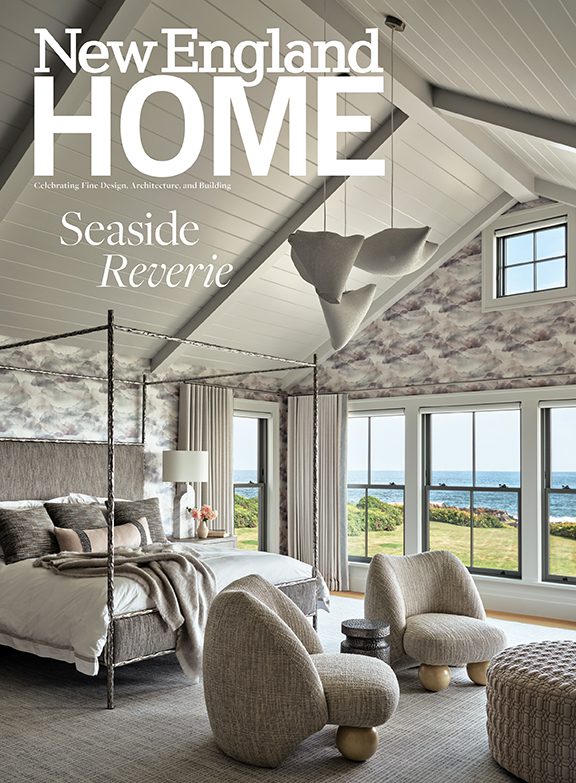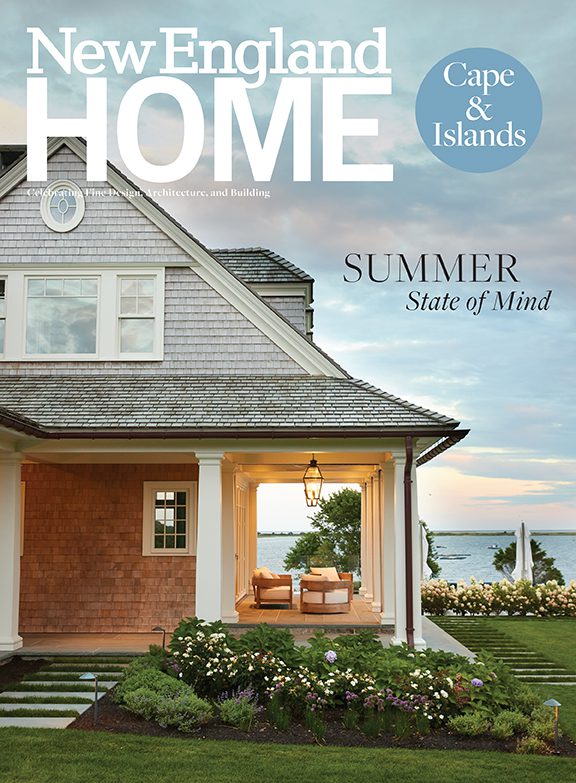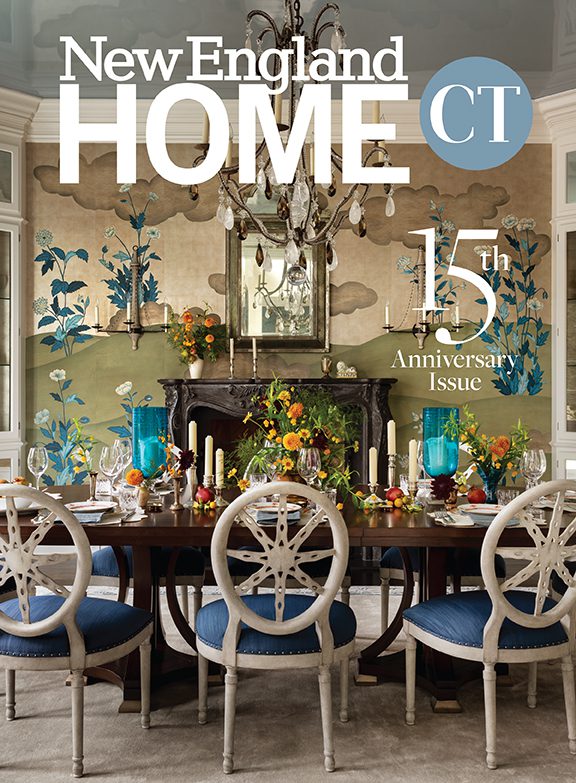Background Stories
October 20, 2011
Text by Janice Randall Rohlf
Susan Harter never feels more appreciated than when someone says, “What a pretty room,” and doesn’t even notice her huge, panoramic murals right away. “A lot of muralists want to be the star of the show,” she says. “I’d rather give you a lovely backdrop for your life.”
Like her custom murals—classically inspired landscapes done in a loose, painterly style—Harter is all about understatement, in personality if not in stature. Like most of her murals, she stands well over six feet tall. “I get a lot of jokes about not needing a ladder to paint,” says the artist, a bit weary of the comments. Her height may come in handy, but she’s built her reputation on her exacting craftsmanship and the work ethic behind it.
Prominent Boston interior designer Eugene Lawrence, who calls himself “very, very, very particular,” is a longtime Harter collaborator. “She is talented and doesn’t have a big ego,” he says. “She is always able to capture the essence of what I want.”
Harter earned a degree in art from Harvard and then went on to study at the School of the Museum of Fine Arts in Boston. She took a job at a nonprofit organization, but one day, just for kicks, she pulled an old chair out to the lawn of the Cambridge, Massachusetts, house she rented with roommates and started giving it a new look with a little decorative painting. “I scavenged cast-off antiques from my millionaire neighbors,” she says with a laugh.
A woman strolling by asked her to paint a coffee table. “She said she was an interior designer,” Harter recalls, “and offered to pay me a figure that was greater than my weekly salary.”
Today, some fifteen years later, Harter teams up regularly with Lawrence, as well as noted Boston-based interior designers Gerald Pomeroy and Charles Spada, creating muted scenes that she describes as “evocative, not descriptive.” Spada comments that he and Harter have worked together on many projects since their early collaborations—a dining-room mural painted in grisage and chinoiserie panels on a large buffet. “Her work is always lovely and appropriate,” he says.
Take, for example, Harter’s mural of a spring garden that rose up on either side of the grand entry stairway in the 2009 Kips Bay Show House, considered by many to be the premier showcase of professional interior design.
Until now, Harter has hand-painted her murals on canvas in her Boston studio, a process that takes anywhere from four to eight weeks, depending on the size of the room, and requires the help of assistants. The meticulous work is time-consuming and the labor costly. Consequently, her murals carry the sort of price tag that only affluent customers can afford. In an effort to make them accessible to a wider range of people, this fall Harter plans to launch a collection of mural wallpapers that will come in both printed and hand-painted versions. “I will still do some custom murals for old clients or interesting projects,” she says, “but I plan to focus in the future on the mural wallpaper collection.”
The hand-painted collection will let clients mix and match their choice of color palette and landscape. Three-foot-by-six-foot samples will show the colors and level of detail; black-and-white line drawings will depict the different landscapes available (fields, gardens, rivers, woods and the like). Based on the client’s selections, Harter will then create a hand-painted mural.
She also plans to offer at least fifteen printed designs—“a great choice when you love the look of a hand-painted mural, but it’s just not in the budget,” Harter notes. Thanks to a cutting-edge digital printing method developed by her husband, Matt Harter—a “computer genius,” she calls him—these copies are almost indistinguishable from the originals. In fact, the first time the artist received a roll from the printer, even she asked, “Why are you returning the original?”
Others have been fooled, too. Sharing one of her favorite stories, Harter recalls two young boys playing in an area with walls featuring her murals. “We’re outdoors,” one of the boys said with delight, and then caught himself. “I know that they’re not really trees, but they feel like trees.”
Editor’s Note Susan Harter can be reached at (617) 501-1320. To see more of her work, visit www.susanharter.com.
Share
![NEH-Logo_Black[1] NEH-Logo_Black[1]](https://b2915716.smushcdn.com/2915716/wp-content/uploads/2022/08/NEH-Logo_Black1-300x162.jpg?lossy=1&strip=1&webp=1)













You must be logged in to post a comment.